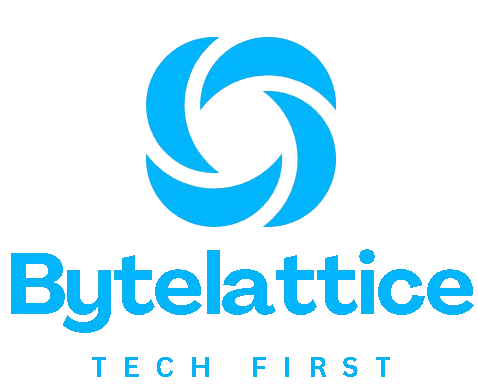
Enterprise Blockchain Solutions are quietly but powerfully reshaping how modern businesses operate. From enhancing transparency to streamlining operations, this technology isn’t just a buzzword anymore—it’s a necessity for forward-thinking companies.
So why did I choose to write about this topic? Because I’ve seen how often people misunderstand or oversimplify blockchain in business. Most of the content online is either too technical or too vague. I want to bridge that gap and make it easier for decision-makers, tech enthusiasts, and curious entrepreneurs to really understand the power of Enterprise Blockchain Solutions.
This post is your deep dive into what enterprise blockchain is, how it works, and why it’s revolutionizing industries—from finance to logistics. Whether you’re a business owner considering this technology or a tech pro looking to stay updated, this guide is for you.
1. What is Enterprise Blockchain and How Does It Work?
At its core, Enterprise Blockchain Solutions refer to blockchain networks specifically designed for large-scale organizations. Unlike public blockchains like Bitcoin, enterprise blockchains are private or permissioned. That means only approved participants can access the network, and it’s governed by rules tailored for business environments.
These solutions typically consist of three main components:
-
Consensus Mechanism: Ensures that all parties agree on the state of the ledger without a central authority.
-
Smart Contracts: Self-executing agreements that automate workflows.
-
Ledger System: A shared, immutable record of transactions across the network.
For example, a supply chain company might use an enterprise blockchain to track goods from manufacturing to delivery. Every transaction—shipment, receipt, or quality check—is logged in real time. Everyone involved sees the same data, reducing delays and errors.
Quick Guide:
| Component | Purpose |
|---|---|
| Consensus Mechanism | Validates transactions without middlemen |
| Smart Contracts | Automates and enforces rules |
| Shared Ledger | Keeps all parties on the same page |
Pro Tip: If you’re thinking of adopting enterprise blockchain, don’t assume it’s just for tech firms. Even industries like food safety and real estate are leveraging it.
2. How Enterprise Blockchain Solutions Are Transforming Industries
The real magic of Enterprise Blockchain Solutions lies in how they’re transforming different sectors:
Finance
Banks use blockchain to speed up cross-border payments, reduce fraud, and improve compliance. JPMorgan’s Onyx platform is a great example—it streamlines interbank transactions using blockchain.
Supply Chain
From tracking produce to verifying the authenticity of luxury goods, blockchain helps companies ensure product integrity. Walmart and IBM collaborated to use blockchain for tracing food safety across global suppliers.
Healthcare
Enterprise blockchain is being used to securely share patient records, streamline insurance claims, and improve drug traceability. It ensures that data can’t be tampered with and only accessible to authorized personnel.
Government
Governments are exploring blockchain for transparent voting systems, land registries, and even tax collection. Estonia is leading the way in using blockchain for digital governance.
Media and Entertainment
Blockchain helps protect intellectual property rights and ensures artists get paid fairly through transparent royalty tracking.
Guide:
| Industry | Use Case Example |
|---|---|
| Banking | Real-time settlements and fraud detection |
| Healthcare | Secure health record sharing |
| Retail | Product authentication and tracking |
| Government | Transparent voting systems |
| Logistics | End-to-end shipment visibility |
Pro Tip: Start by identifying areas in your business where transparency, security, or automation can solve existing pain points. That’s usually the best entry point for blockchain adoption.
3. What Are the Key Benefits of Implementing Enterprise Blockchain?
When done right, Enterprise Blockchain Solutions bring immense value to an organization. Here’s a breakdown of key advantages:
1. Enhanced Transparency
Every transaction is recorded and visible to authorized parties, making auditing straightforward and reducing the chances of fraud.
2. Improved Efficiency
Smart contracts automate processes like payment releases or document verifications, cutting down manual labor and time delays.
3. Cost Reduction
By eliminating intermediaries and reducing transaction errors, businesses save significantly on operational costs.
4. Better Traceability
For industries like food, fashion, and pharma, blockchain helps trace every step in the supply chain, which is vital for recalls or authenticity verification.
5. Security
Blockchain’s cryptographic structure makes it highly secure. Once a record is added, it can’t be tampered with, ensuring data integrity.
Note:
Security doesn’t mean invincibility. While blockchain itself is secure, vulnerabilities often lie in how it’s implemented—like poorly written smart contracts or weak user access controls.
Pro Tip:To fully unlock these benefits, make sure your blockchain integrates well with your existing systems and processes.
4. How to Choose the Right Enterprise Blockchain Solution for Your Business
Picking the right solution can be tricky, especially with so many platforms out there like Hyperledger Fabric, Quorum, Corda, and others.
Here’s what to consider:
-
Permissioned vs. Permissionless: Do you need a private, consortium-based blockchain or one open to the public?
-
Scalability: Can the platform handle large volumes of transactions?
-
Security Features: Look for multi-layer encryption and strong identity management.
-
Smart Contract Support: Does it allow complex automation?
-
Integration Capabilities: Will it easily plug into your current infrastructure?
-
Community and Support: Open-source platforms often have large communities that contribute to security and updates.
Table: Top Platforms Comparison
| Platform | Best For | Notable Feature |
|---|---|---|
| Hyperledger Fabric | Supply chains, healthcare | Modular architecture |
| Quorum | Banking, finance | Enhanced privacy features |
| Corda | Legal, finance | Point-to-point communication |
| Ethereum (private) | Tech-heavy industries | Strong smart contract capabilities |
Quick Tip: Always run a pilot project first. Start small, test it, and measure ROI before going full-scale.
5. What Are the Challenges and Limitations of Enterprise Blockchain?
While Enterprise Blockchain Solutions have potential, they’re not without hurdles.
Common Challenges:
-
Integration Issues: Legacy systems may not play well with blockchain tech.
-
Scalability: Some platforms can’t handle large-scale data loads efficiently.
-
Lack of Standardization: There’s no universal framework, making interoperability tough.
-
Skill Shortage: Finding developers with blockchain expertise is still a challenge.
-
High Initial Costs: Setup, training, and transition costs can be steep upfront.
Note:
Also, many companies underestimate the organizational change required. Blockchain isn’t just tech—it often requires a complete process overhaul.
Pro Tip: If you’re new to blockchain, partner with consultants or firms that specialize in enterprise implementations. They can help you avoid common pitfalls.
6. How to Budget for Enterprise Blockchain Implementation: Insights from Financial Institutions
Budgeting for Enterprise Blockchain Solutions requires a strategic approach. Based on insights from banks and financial institutions, here’s how to structure your investment:
Key Budget Considerations:
-
Infrastructure: Cloud or on-premise servers, data storage, and networking.
-
Development Costs: Custom code, APIs, and smart contracts.
-
Training: Upskilling employees to work with blockchain tools.
-
Maintenance and Support: Ongoing costs after deployment.
-
Security Audits: Independent audits of smart contracts and system integrity.
Example Breakdown:
| Category | Estimated % of Budget |
|---|---|
| Infrastructure | 25% |
| Development | 30% |
| Training | 10% |
| Support/Maintenance | 20% |
| Compliance & Audits | 15% |
Quick Tip: Always overestimate slightly. Blockchain projects often encounter unexpected costs during testing or compliance phases.
7. What Are the Latest Trends in Enterprise Blockchain Technology?
The blockchain world is evolving rapidly. Here are some trends that are redefining Enterprise Blockchain Solutions:
1. Interoperability
New protocols are emerging that allow different blockchains to “talk” to each other. Think of it like email—everyone should be able to communicate, no matter the provider.
2. Blockchain-as-a-Service (BaaS)
Cloud providers like Microsoft Azure and Amazon Web Services now offer BaaS platforms that simplify deployment and reduce costs.
3. Zero-Knowledge Proofs (ZKPs)
ZKPs let you verify something without revealing the actual data. Useful for privacy-focused applications.
4. Tokenization of Assets
Companies are exploring blockchain to tokenize real-world assets like real estate, commodities, or even intellectual property.
Check out this: World Economic Forum on Blockchain – A great resource for ongoing trends.
Pro Tip: Stay updated by subscribing to newsletters or following blockchain research forums. Trends move fast in this space.
8. How Enterprise Blockchain Solutions Enhance Security and Transparency
One of the biggest selling points of Enterprise Blockchain Solutions is their focus on security and transparency—critical elements in any business.
Security Features:
-
Cryptographic Hashing: Every block is secured with a unique hash.
-
Immutable Ledger: Data, once recorded, cannot be altered.
-
Permissioned Access: Only verified users can view or edit information.
Transparency Enhancements:
-
All transactions are logged in real-time.
-
Smart contracts eliminate the need for trust between parties.
-
Auditing becomes easier and more reliable.
Note:
However, be cautious. Just because the data is immutable doesn’t mean it’s immune to being input incorrectly. Always combine blockchain with solid data governance.
Pro Tip: Make blockchain part of a larger cybersecurity strategy—not the whole thing. It’s a powerful layer, not a complete shield.
9. What Case Studies Demonstrate Successful Enterprise Blockchain Implementations?
Seeing theory in action makes things real. Here are a few standout Enterprise Blockchain Solutions already delivering results:
Maersk and IBM: TradeLens
This joint venture digitized the shipping process, reducing paperwork, delays, and fraud. Over 150 participants joined the network, from port authorities to logistics firms.
De Beers: Tracr
To combat conflict diamonds, De Beers built a blockchain platform that tracks the origin and journey of each diamond. This brought unprecedented transparency to the gemstone industry.
Pfizer and Clinical Trials
Pfizer explored blockchain to manage clinical trial records securely. This helped ensure data integrity and compliance with regulators.
Walmart and IBM
Walmart used blockchain to trace the origin of mangoes from six days to just 2.2 seconds—helping identify contamination sources faster and improving food safety.
Pro Tip: When evaluating a blockchain solution, always ask for case studies or proof-of-concept results to validate its effectiveness.
Final Thought
Enterprise Blockchain Solutions are no longer futuristic—they’re here and actively solving real-world problems. From boosting security to streamlining operations, their impact is undeniable.
If you’ve been considering it, now is the time to explore what blockchain can do for your organization. Don’t wait until your competitors gain the edge.
My personal advice? Start small. Test, learn, and grow. With the right approach, blockchain can become a game-changer for your business.
Let’s continue the conversation—drop a comment, ask a question, or share your blockchain journey. I’m always here to help.
